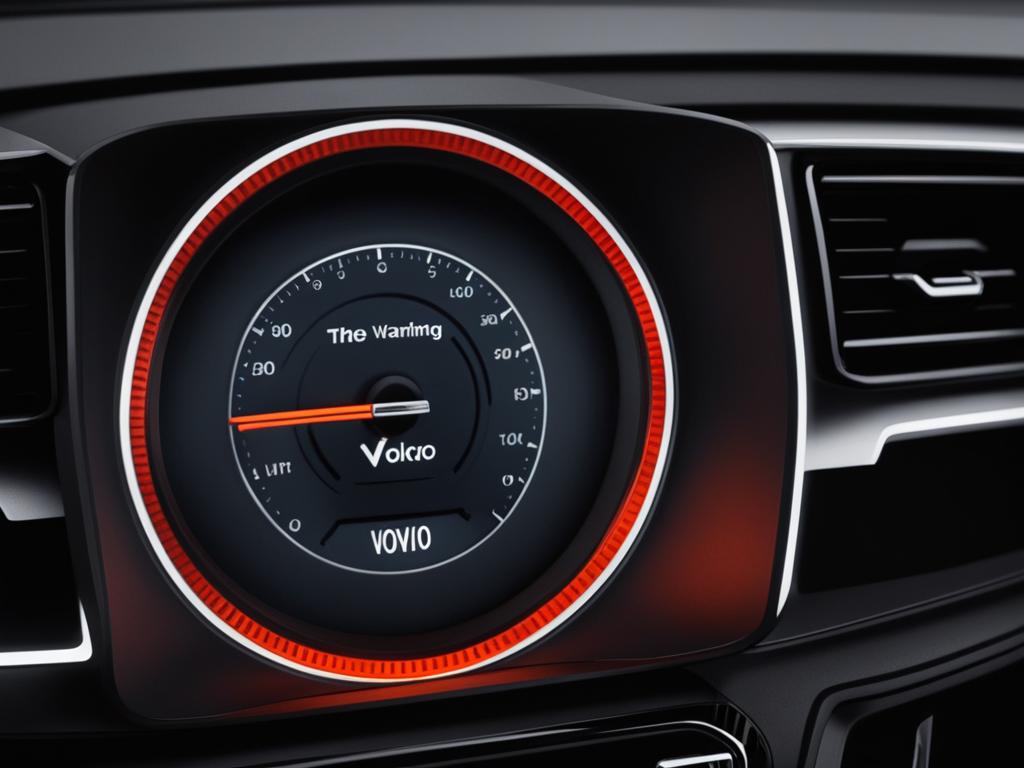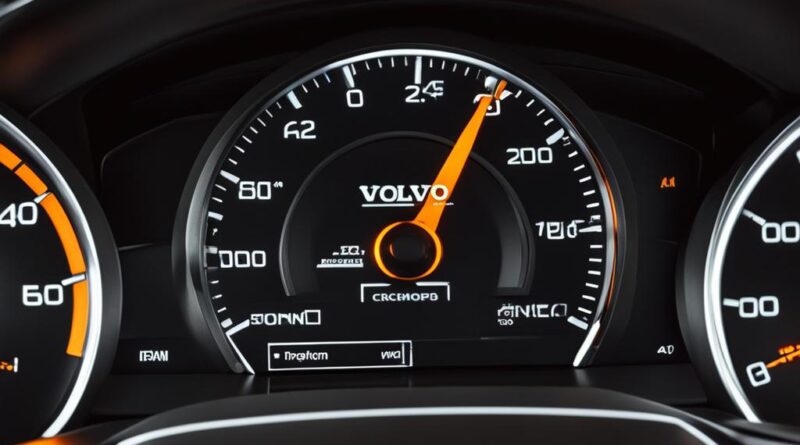Volvo Check Engine Light Guide & Tips
When the check engine light illuminates on your Volvo vehicle, it can be a cause for concern. While it may indicate a serious problem, it can also be triggered by minor issues. It’s important to have the check engine light diagnosed as soon as possible to avoid any potential damage to your vehicle. Volvo vehicles are equipped with advanced self-checking sensors that provide detailed insight into the issues. It’s recommended to schedule a service appointment with a qualified Volvo technician to properly diagnose and resolve the check engine light issue.
Key Takeaways:
- Volvo check engine light can indicate both minor and serious problems.
- Timely diagnosis and resolution of check engine light issues are crucial.
- A qualified Volvo technician should be consulted for accurate diagnosis and repair.
- Volvo vehicles are equipped with advanced self-checking sensors.
- Scheduling a service appointment is recommended to address check engine light problems.
Can I Drive with a Check Engine Light On?
The answer to whether you can drive with a check engine light on depends on the specific issue. In general, the check engine light is not used for major or serious deficiencies that would prevent you from driving the vehicle. However, it’s important to note that a small issue can potentially escalate into a larger problem if not addressed.
If your check engine light is flashing or lit up red, it’s recommended to avoid driving the vehicle and have it towed to a service center to prevent further damage.
Some minor issues that could cause the check engine light to come on include a loose gas cap or a faulty oxygen sensor. These issues may not immediately impact your ability to drive the vehicle but should still be addressed as soon as possible to prevent any potential damage or worsening of the problem.
“If your check engine light is flashing or lit up red, it’s recommended to avoid driving the vehicle and have it towed to a service center.”
It’s important to remember that the check engine light is an indicator of a potential issue with your vehicle’s engine or emissions system. Ignoring the check engine light or continuing to drive the vehicle when there is a serious problem can lead to more expensive repairs down the line.
If your check engine light is steady or yellow, you can generally continue driving the vehicle, but it’s still a good idea to have the issue diagnosed and repaired as soon as possible to avoid further complications.
Ultimately, it’s best to consult your vehicle’s owner’s manual or reach out to a qualified Volvo technician for guidance on whether it’s safe to drive with the check engine light on in your specific situation. They can provide personalized advice based on the specific issue indicated by the check engine light.
Common Causes of Volvo Check Engine Light
When the check engine light illuminates in your Volvo vehicle, it’s important to understand the common causes behind it. By identifying these causes, you can take appropriate actions to address the issue and prevent further complications.
- Worn Spark Plugs: Over time, spark plugs can become worn or fouled, leading to engine misfires and triggering the check engine light. Regular maintenance and timely replacement can help prevent this issue.
- Loose Gas Caps: A loose or improperly tightened gas cap can cause fuel vapor leakage and trigger the check engine light. Simply tightening or replacing the gas cap can often resolve this issue.
- Faulty Oxygen Sensors: The oxygen sensors in your Volvo monitor the oxygen levels in the exhaust gases. When they malfunction, it can lead to a decrease in fuel efficiency and trigger the check engine light.
- Issues with the Catalytic Converter: Problems with the catalytic converter, such as a clogged or damaged converter, can cause a drop in engine performance and trigger the check engine light.
- Vacuum Leaks: Leaks in the vacuum lines or hoses of your Volvo’s engine can disrupt the air to fuel ratio, leading to engine issues and illuminating the check engine light.
- Problems with the Ignition System: Issues with the ignition coils, spark plug wires, or other components of the ignition system can cause engine misfires and trigger the check engine light.
- Fuel System Issues: Problems with the fuel pump, fuel injectors, or fuel pressure regulator can disrupt the fuel delivery and lead to engine performance issues, triggering the check engine light.
- Issues with Variable Valve Timing: Volvo vehicles equipped with variable valve timing can experience malfunctions in the system, leading to decreased engine performance and the illumination of the check engine light.
If your check engine light is on, it’s crucial to have a qualified technician diagnose the specific cause to properly address the issue. They will use advanced diagnostic tools to retrieve error codes from the vehicle’s computer system and perform the necessary repairs or replacements.
By addressing the common causes of the check engine light in a timely manner, you can ensure the optimal performance and longevity of your Volvo vehicle.

Expert Tip:
“Regular maintenance and addressing check engine light issues promptly can help keep your Volvo running smoothly and efficiently.”
How to Diagnose the Volvo Check Engine Light
When the check engine light illuminates on your Volvo vehicle, it’s essential to diagnose and address the issue promptly. To accurately diagnose the check engine light in a Volvo, you can utilize an OBD-II scanner to retrieve the diagnostic codes stored in the vehicle’s onboard computer system. By connecting the scanner to the OBD-II port, you can access the specific codes that are causing the check engine light to illuminate.
The diagnostic codes provide valuable information about the underlying issue and enable a qualified technician to perform an accurate diagnosis and repair process. It is recommended to consult the manufacturer’s manual or seek professional guidance when using an OBD-II scanner to ensure that you interpret the codes correctly.
Once you have retrieved the diagnostic codes, you can refer to a Volvo-specific or universal diagnostic code guide to understand the meaning of each code. These guides provide explanations for the codes and can help identify the specific area or component of the vehicle that requires attention.
In addition to reading the codes, some advanced OBD-II scanners also offer additional features such as real-time data monitoring, freeze-frame data, and the ability to clear codes. These features provide further insight into the vehicle’s condition and can aid in diagnosing intermittent issues or verifying repairs.
It’s important to note that while an OBD-II scanner can provide valuable diagnostic information, it is not a substitute for professional expertise. If you are unsure about interpreting the codes or need assistance with the diagnosis and repair process, it is recommended to consult a qualified Volvo technician.
Conclusion
The check engine light in your Volvo vehicle serves as a crucial indicator, alerting you to potential issues with the engine or emissions system. When this warning light illuminates, it’s essential to take immediate action to prevent further damage to your vehicle.
Scheduling a service appointment with a qualified Volvo technician is the best course of action when faced with a check engine light. Their expertise and diagnostic tools can accurately identify the underlying issue and provide the necessary repairs or maintenance. By addressing the problem promptly, you can avoid costly repairs down the line.
Regular maintenance and timely resolution of check engine light issues are vital to the optimal performance and longevity of your Volvo. Taking proactive steps to address any engine problems and performing routine maintenance can keep your vehicle running smoothly and efficiently.
If you encounter a check engine light, it’s important not to ignore it. Instead, consult a professional to undergo a thorough engine diagnostic. This will diagnose the specific problem and ensure that your Volvo is operating at its best, providing you with a safe and reliable driving experience.
FAQ
What should I do if the check engine light illuminates on my Volvo vehicle?
It’s important to have the check engine light diagnosed as soon as possible to avoid any potential damage to your vehicle. Schedule a service appointment with a qualified Volvo technician for proper diagnosis and resolution.
Can I drive with a check engine light on?
The answer depends on the specific issue. Generally, the check engine light is not used for major or serious deficiencies that would prevent you from driving the vehicle. However, it’s important to address even minor issues promptly to prevent escalation.
What are some common causes of the check engine light in Volvo vehicles?
Some common causes include worn spark plugs, loose gas caps, faulty oxygen sensors, issues with the catalytic converter, vacuum leaks, problems with the ignition system, fuel system issues, and variable valve timing problems. A qualified technician can diagnose the specific cause.
How can I diagnose the check engine light in my Volvo vehicle?
Use an OBD-II scanner to read the diagnostic codes stored in the vehicle’s computer system. Connect the scanner to the OBD-II port to retrieve the specific codes causing the check engine light. Consult the manufacturer’s manual or seek professional guidance when using an OBD-II scanner.
Why is the check engine light important in a Volvo vehicle?
The check engine light alerts you to potential issues with the engine or emissions system. It’s crucial to take prompt action when the light comes on to prevent further damage. Schedule a service appointment with a qualified Volvo technician for proper diagnosis and resolution.




